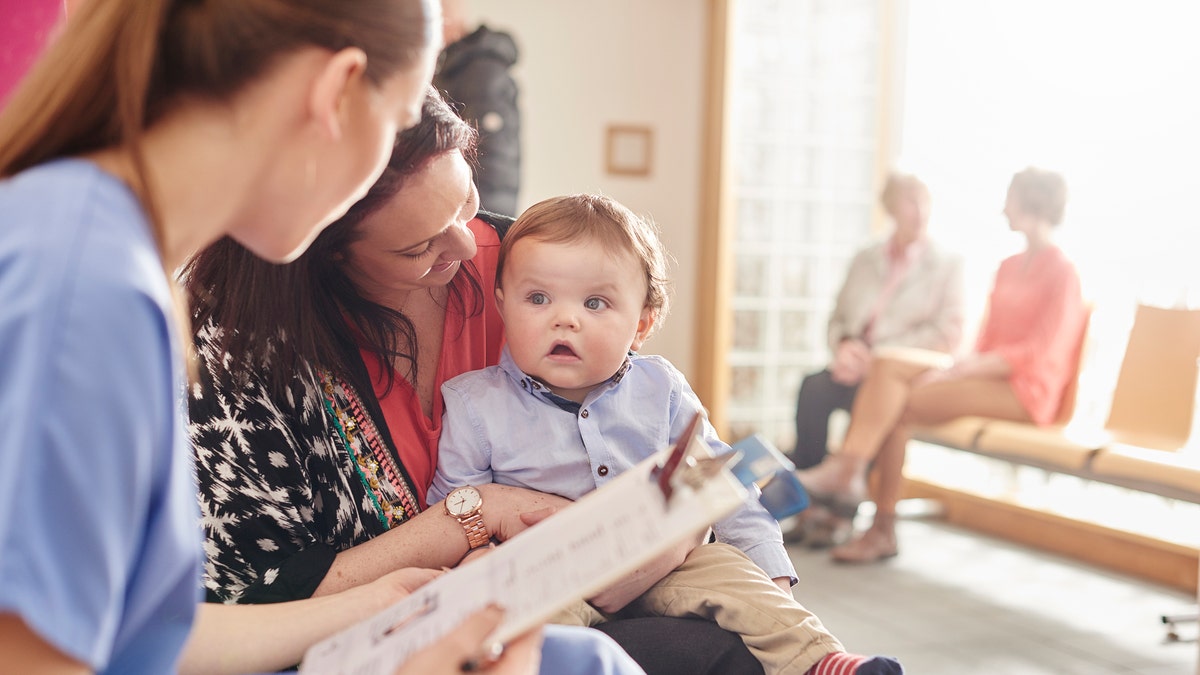
a female nurse sits next to a woman and her baby son in the waiting room of a clinic and casually chats to them . In the background two patients sit and chat to a senior doctor . (sturti)
Children born through assisted reproductive technologies have similar cognitive, motor and language development at age two as those born through natural conception, according to a new Canadian study.
Researchers saw no differences in skills such as movement, memory, exploration, vocabulary, word combination, and sensory and motor development.
"Studies have shown that assisted reproductive technology (ART) use is increasing the risk of prematurity and major malformations," said study author Anick Berard, research chair of Medications, Pregnancy and Lactation at the University of Montreal.
"Very few studies have been able to look at long-term outcomes such as cognitive function," she told Reuters Health. "Our results are reassuring."
In a paper scheduled for publication in Obstetrics and Gynecology, Berard and colleagues report on data from the 3D-Study, which followed 2,366 women in Quebec from pregnancy through two years after birth. They focused on 175 children born through ART and 1,345 children born through natural conception.
The research team studied the children using three measures of cognitive and language development and didn't see any statistically significant differences.
In the U.S., about 1.5 percent of births involve use of reproductive technologies, according to the Centers for Disease Control and Prevention in Atlanta, Georgia.
"Although that's a small proportion, it represents a substantial number of children," said Edwina Yeung of the National Institute of Child Health and Human Development in Bethesda, Maryland, who was not involved with the study.
"As technologies have rapidly evolved over the years, it's important to continue examining this question with children conceived more recently," she told Reuters Health.
The new findings back up data from the Upstate KIDS Study, conducted by Yeung and colleagues in 2016, which found no differences in ART and natural birth development for children up to age 3.
"We have an ethical obligation to continuously monitor the development of ART children to ensure their safety as they grow," said Bjorn Bay of The Fertility Clinic at Aarhus University in Denmark, who was not involved with the study.
More ART children are born preterm with a lower birth weight and have a higher risk of malformations, he said. With the low number of participants, this study may not have been able to detect small neurodevelopmental differences.
"These small differences are interesting and important," he told Reuters Health by email. "Also, the study only reports results up to age two, and many aspects of cognition and neurodevelopment don't fully develop until later in life."
Furthermore, the study couldn't differentiate between the types of treatments, some of which may have higher risks than others.
In vitro fertilization "bypasses natural fertilization - therefore natural selection - so these are valid concerns," said Sony Sierra of the LifeQuest Center for Reproductive Medicine in Toronto, who was not involved with the study.
"More Canadian data is coming in the near future as we now have a large database associated with our large IVF database," she told Reuters Health by email. "This will provide long-term data on infant health and development related to type of assisted reproduction."
